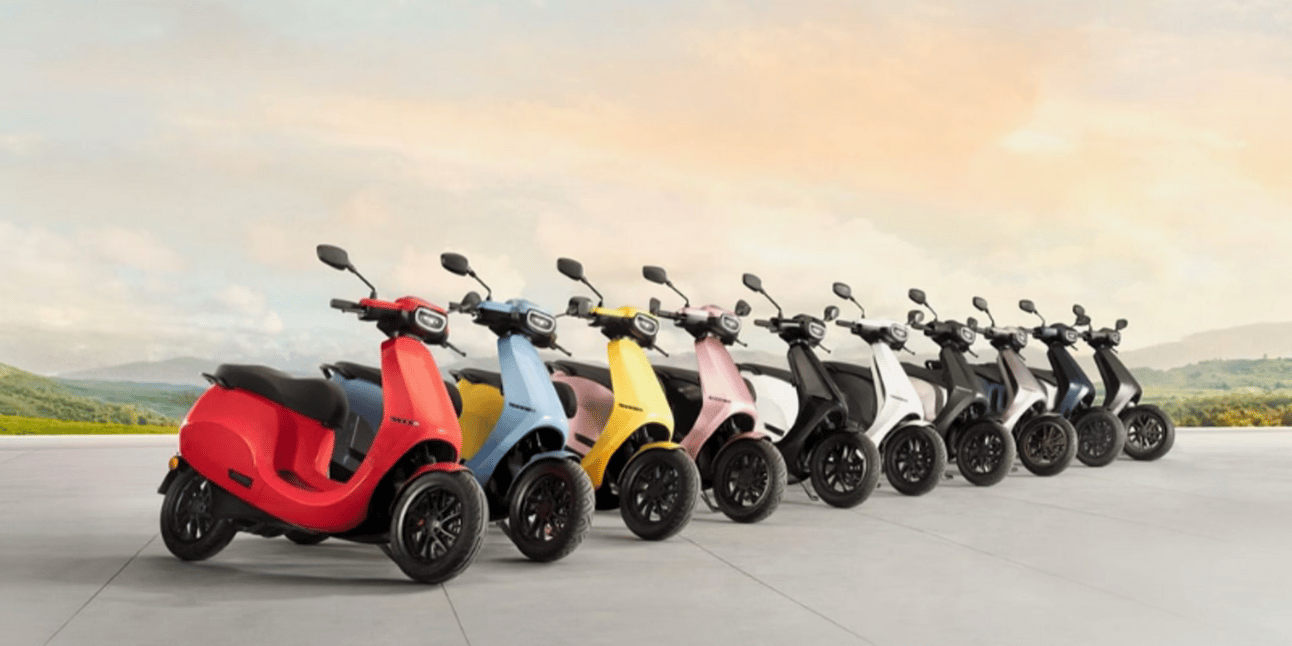- The Brief
- Posts
- The Rise and Rise of India's New Age Consumer Brands
The Rise and Rise of India's New Age Consumer Brands
Decode the most important shifts in India's consumer economy with Lightbox
☕🗞️ Good morning! Welcome to The Brief

India’s consumption wave is being driven by a sizeable and growing young population. Image credit: Lightbox
India is on the cusp of becoming the world’s fourth largest economy with the IMF projecting the country’s GDP at $4.187 trillion in 2025, marginally outpacing Japan’s projected $4.186 trillion. The top growth driver will be domestic consumption which already accounts for over 56% of the economy. Rapid urbanisation and growing rural consumption set the stage for increased capital flows and innovation to cater to the rapidly evolving Indian consumer, assuming that policy reforms will keep pace.
Before we dive in, a quick introduction to who we are.
Lightbox is a Mumbai-born venture capital firm focused on technology-led consumer businesses. Over the past decade we’ve employed a concentrated portfolio construction and deep operational engagement to enable our portfolio companies and limited partners to navigate this market.
India is moving steadily towards becoming a $10 trillion economy, driven by rising consumption and digital adoption. We believe we are uniquely positioned to offer a front-row seat to the most important shifts in the country’s consumer markets. If you’re a global capital allocator, family office, UHNI, or strategic investor looking to participate in the India opportunity—this newsletter is for you.
In this edition:
New age consumer brands, part of the now mainstream D2C wave, are kicking up quite the storm this year. Established FMCG players seeking to stay ahead of shifting consumer preferences are on an acquisition spree, cornering minority and majority stakes in prime assets. The latest beneficiary is homegrown pet food company Drools. And, almost on cue, there’s a new specialist consumer fund on the road to raise $600 million.
Let’s get into it.
📡 Signals
🤝 Why are FMCG Majors on a Buying Spree?
It’s been a good week for India's new age consumer brands. For starters, pet food company Drools hit the headlines after Nestle SA acquired a minority stake. While the financial details of the deal were undisclosed, Drools is claiming a $1 billion-plus valuation subsequent to Nestle’s investment.
Nestle’s move is in line with a slew of recent moves by established FMCG players to corner stakes in upcoming consumer businesses. In January, Hindustan Unilever acquired over 90% of science-backed clean beauty brand Minimalist for 3,000 crore. In February, ITC struck a deal to buy frozen foods maker Prasuma in a phased transaction worth Rs 300 crore. And in April, it acquired Sresta Natural Bioproducts, which retails staples under the brand name 24 Mantra Organic.
FMCG majors have been on a post-pandemic acquisition spree, driven by shifting consumer preferences towards higher personalisation and convenience. Earlier, Tata Consumer acquired Capital Foods (owner of the Ching’s Secret and Smith & Jones brands) and Organic India (health foods and beverages); Dabur bought Sesa Care (hair care); Marico snapped up Plix (plant-based nutrition) and acquired a majority stake in True Elements (healthy breakfast and snack products).
New age consumer brands offer a level of convenience, fulfilling customer demands with immediacy that traditional trade channels struggle to match. Leading FMCG companies have reported a decline in margins on account of higher input costs and food inflation, which ultimately slowed down the pace of urban consumption. Premiumisation and the shift toward niche products through quick commerce channels is priority for the FMCG sector in 2025.
The heightened interest from the conventional FMCG quarter is a positive for new age consumer businesses, especially D2C brands, which are increasingly beginning to recognize the constraints of operating solely through digital channels. For instance, while quick commerce is projected to grow market share by more than 70% at the end of this decade, it’ll still be less than 5% of the total grocery market, according to Bernstein Research.
Lightbox’s Ashish Bhargava joins Sandeep Murthy this week to break down:
The building blocks of a winning portfolio expansion strategy.
What a successful acquisition integration looks like.
Lightbox’s portfolio brands’ Nua and Bombay Shirt Company’s relentless focus on consumer-centricity.
🚀 L Catterton Plans $600M India fund
In other significant news, L Cartterton, leading consumer sector focused private equity firm backed by global luxury conglomerate LVHM, is raising a $600 million fund to double down on next generation consumer brands. The fund will invest in food and beverages, consumer services and healthcare, retail and restaurants among other spaces.
The proposed new fund already has a $30 million commitment from World Bank arm IFC, which has committed an additional $30 million for co-investments.
📰 Headlines
Ola Electric Slips, Dhan Nears Unicorn Status

Image Credit: Ola Electric
Aditya Birla Fashion and Retail Ltd (ABFRL) is doubling down on growth, aiming to triple revenue and double margins over the next five years. Its lifestyle subsidiary, Aditya Birla Lifestyle Brands Ltd (ABLBL)—which includes names like Louis Philippe, Van Heusen, and Peter England—is targeting a 2X scale-up, backed by strong cash flows and a 300+ store expansion in FY26. Now, on track for a separate listing by June, ABLBL is set to chart its own growth path, while ABFRL continues investing across ethnic, luxury, and digital fashion verticals with ₹2,350 crore in hand.
Value fashion chain Citykart has raised ₹538 crore in a mix of primary and secondary funding led by TPG NewQuest and A91 Partners, pushing its valuation to ₹1,400 crore. With ₹120 crore in fresh capital, the retailer plans to aggressively expand beyond its tier-II and tier-III strongholds into states like Rajasthan and Odisha, adding 40–50 stores annually. Citykart crossed ₹900 crore in revenue in FY25 and expects to hit ₹1,300 crore this year—all while staying profitable for five years running. An IPO is on the horizon, but not a near-term priority, said founder Sudhanshu Agarwal.
Ola Electric has dropped to third place in India’s electric two-wheeler market, overtaken by TVS Motor and Bajaj Auto in May. The company’s market share fell to 20%—down from over 50% just 13 months ago—as it registered 15,221 vehicles, a 60% drop from May 2024. Meanwhile, TVS and Bajaj captured 25% and 22.6% market share, respectively, amid a broader industry slowdown. Ather Energy, too, saw its share dip to 13.1%, with volumes sliding to under 10,000 units.
Online trading platform Dhan is set to raise $190–200 million in a round led by ChrysCapital, with participation from Alpha Wave, MUFG, and the Bharti Group’s family office. Valued at $1.1 billion post-deal, Dhan is poised to become India’s fifth unicorn of 2025. The mix of primary and secondary capital reflects investor confidence in India’s growing base of young capital market participants. Existing backer Harsh Jain, co-founder of Dream11, will also participate.
Online investment platform Groww has confidentially filed a draft red herring prospectus with SEBI for an initial public offering (IPO). Reports put the IPO size at between $700 million and $1 billion. Separately, the company is reportedly raising a $300 million pre-IPO round at a valuation of $7 billion. Iconiq Capital is expected to pump in $150 million as part of the round.
Tata Starbucks reported revenue from operations of Rs 1,277 crore ($150 million) in FY25, reflecting just a 5% increase from Rs 1,218 crore ($143 million) last year due to stiff competition from local startups. The slowdown in growth follows a 12% operating revenue increase in FY24 and a whopping 70% jump in FY23. At the same time, Starbucks India’s losses widened significantly to Rs 135.7 crore ($16 million) in FY25, up 65% from Rs 82 crore ($9.6 million) in FY24, according to Tata Consumer Products' annual report.
We would love to hear from you. Please reply to this email with your thoughts, suggestions, or just to say hello. If you would like to share this newsletter with colleagues, associates and friends in the ecosystem, point them to the Subscribe button below.